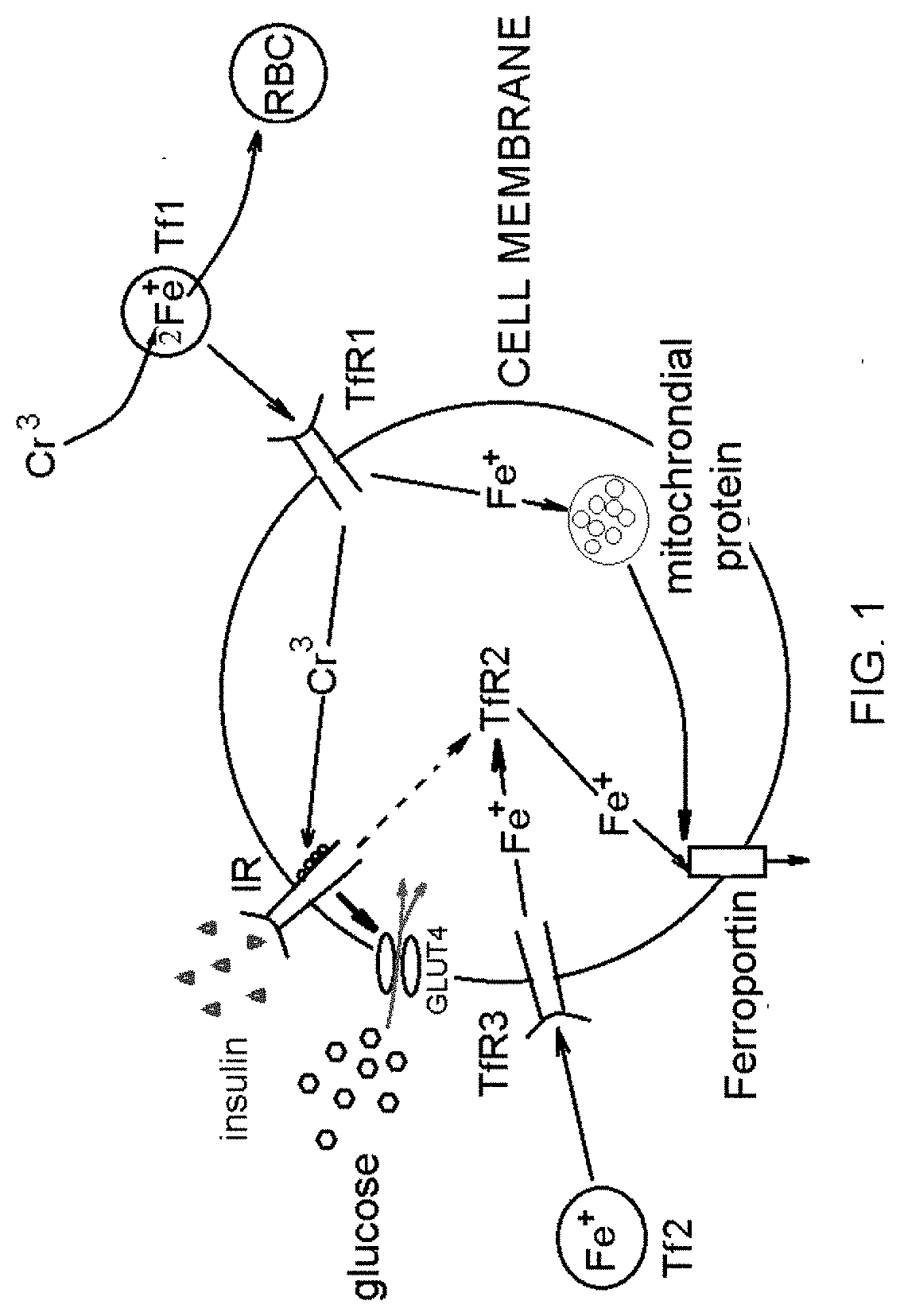Compositions and methods for intracellular iron displacement proteins
a technology protein, which is applied in the field of compositions and methods of intracellular iron displacement proteins, can solve the problems of affecting cellular proliferation, iron overload is also common, and equally detrimental, and achieves the effect of facilitating excessive iron transfer
- Summary
- Abstract
- Description
- Claims
- Application Information
AI Technical Summary
Benefits of technology
Problems solved by technology
Method used
Image
Examples
example 1
[0108]Iron Displacement on Transferrin Protein is Required Iron Homeostatis
[0109]Serum transferrin is a mammalian iron-transport protein. It has two specific metal-binding sites that bind a variety of metal ions in addition to ferric ion. Equilibrium constants for the binding of zinc(II) have been determined by difference UV titrations using nitrilotriacetic acid and triethylenetetramine as competing ligands. The values are log K1*=7.8 and log K2*=6.4 in 0.10 M N-(2-hydroxyethyl)piperazine-N′-2-ethanesulfonic acid and 15 mM bicarbonate, pH 7.4 at 25 degrees C. Titrations of the two forms of monoferric transferrin show that K1* corresponds to zinc binding to the C-terminal site and K2* corresponds to binding at the N-terminal site [1]. These results indicate that at serum bicarbonate concentrations, transferrin should have a higher affinity for zinc(II) than serum albumin and therefore could play some role in zinc transport. A linear free-energy relationship has been constructed whic...
example 2
Evidence of Iron Displacement Via the Transferrin-Binding Chromium Chloride
[0115]Transferrin (Tf)-bound two iron atoms (Tf-[Fe(III)]2) binds to transferrin receptor (TfR1) on the cell surface where the Tf-[Fe(III)]2-TfR1 complex is endocytosed. Acidification of the endosome causes the release of Fe(III) from Tf protein where it is reduced to Fe(II) by the STEAP3 oxidoreductase before export by DMT1 (divalent metal transporter 1). Apo-Tf / TfR1 complex is returned to the cell surface where it dissociates and initiates another round of iron uptake [1]. To gain insights into a structure and function of the Tf, we first studied the high affinity transferrin-binding of chromium chloride (FIG. 1).
[0116]Competitive binding of Fe(III), Cr(III), and Ni(II) to the Tf was investigated at various physiological iron to Tf protein concentration ratios. Loading percentages for these metal ions are based on a two M(n+) to one Tf (i.e., 100% loading) stoichiometry and were determined using a particle ...
PUM
 Login to View More
Login to View More Abstract
Description
Claims
Application Information
 Login to View More
Login to View More - R&D
- Intellectual Property
- Life Sciences
- Materials
- Tech Scout
- Unparalleled Data Quality
- Higher Quality Content
- 60% Fewer Hallucinations
Browse by: Latest US Patents, China's latest patents, Technical Efficacy Thesaurus, Application Domain, Technology Topic, Popular Technical Reports.
© 2025 PatSnap. All rights reserved.Legal|Privacy policy|Modern Slavery Act Transparency Statement|Sitemap|About US| Contact US: help@patsnap.com

